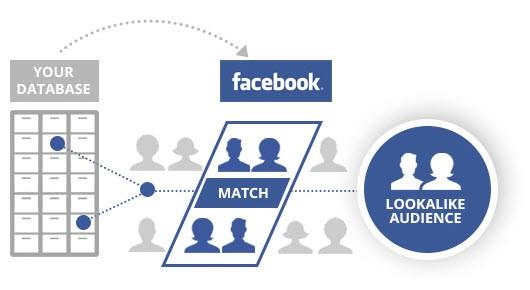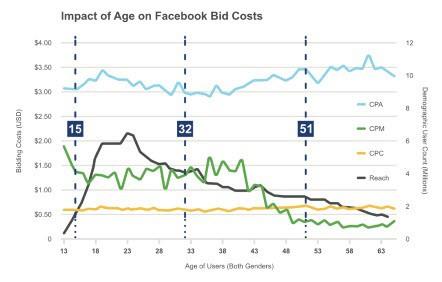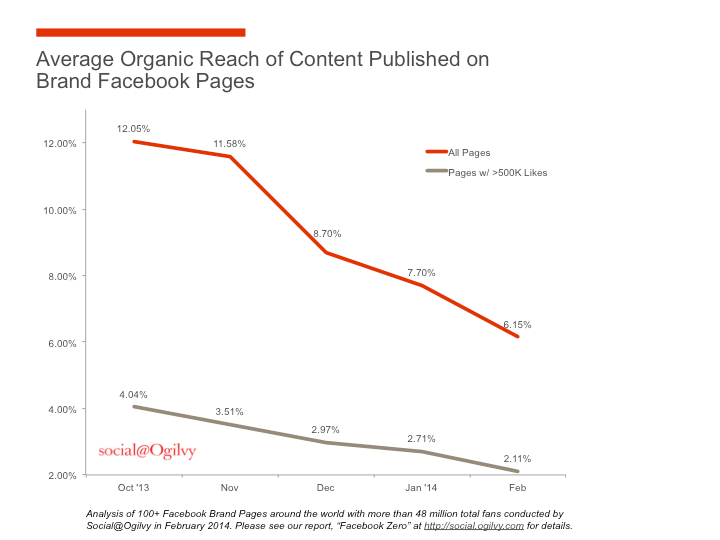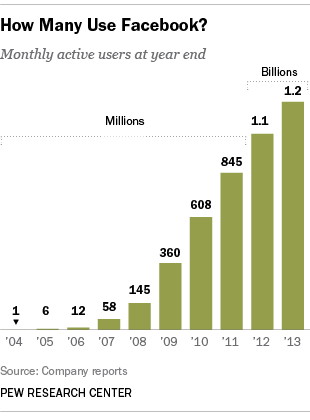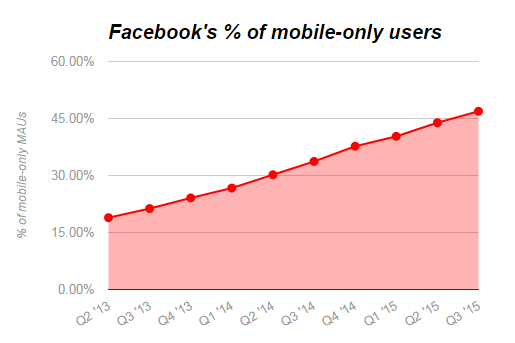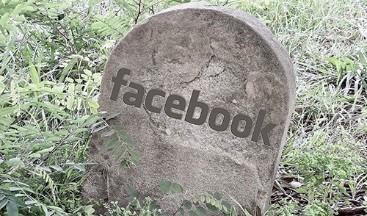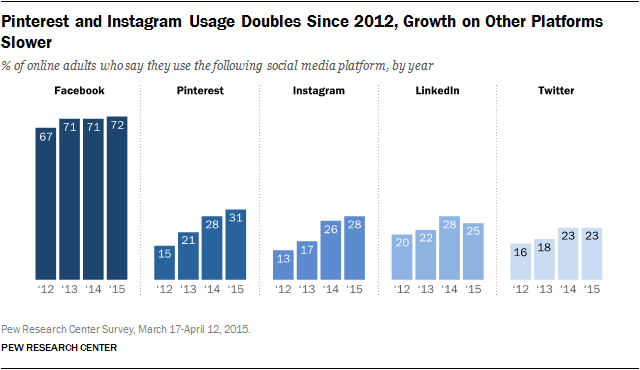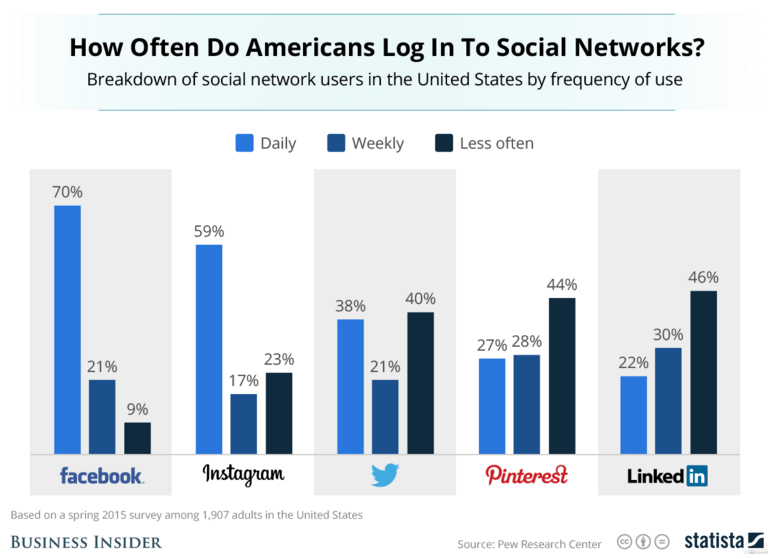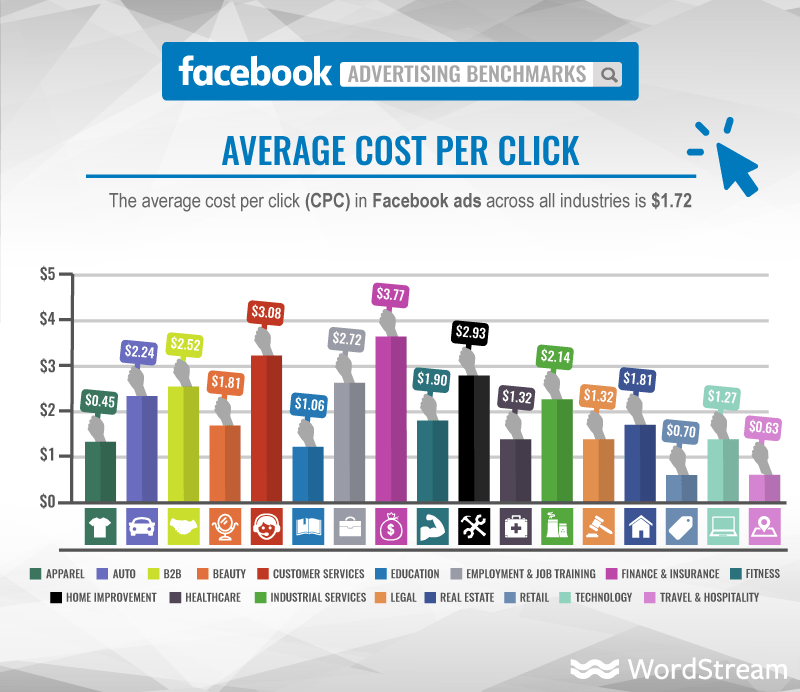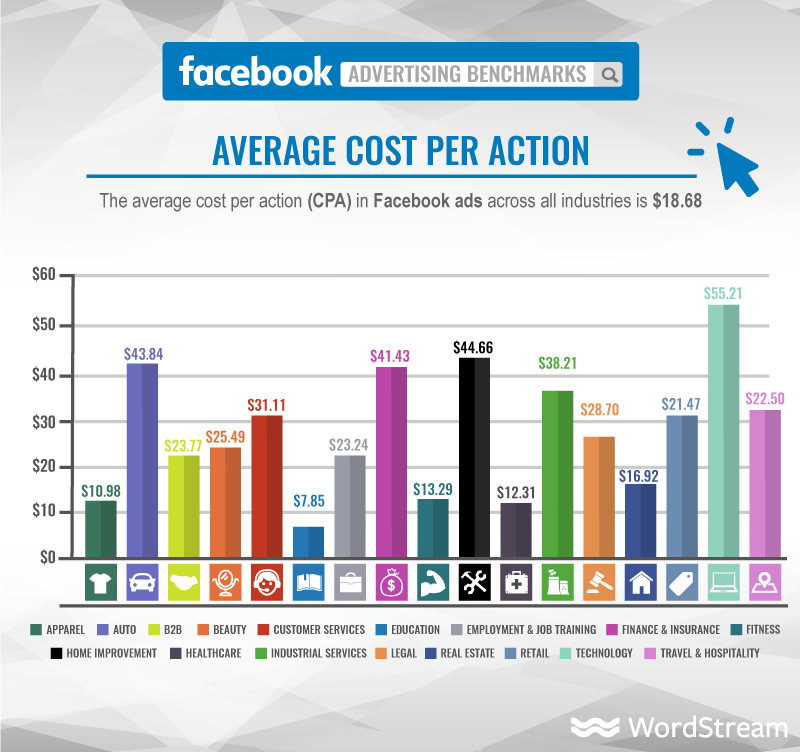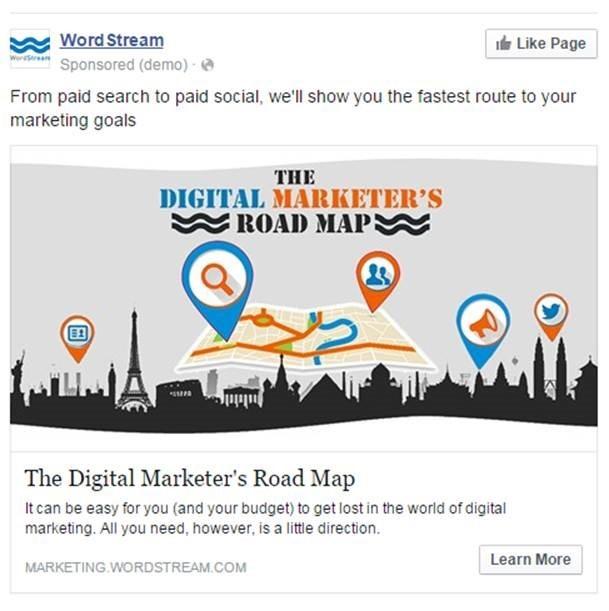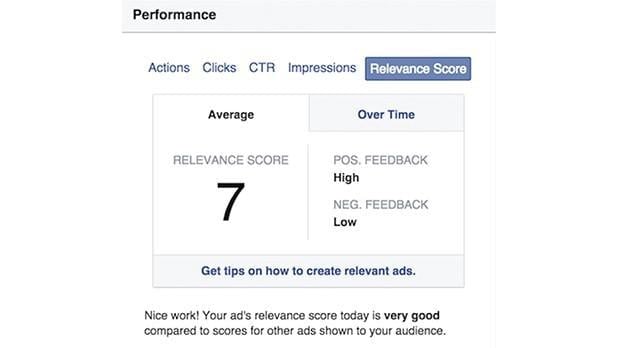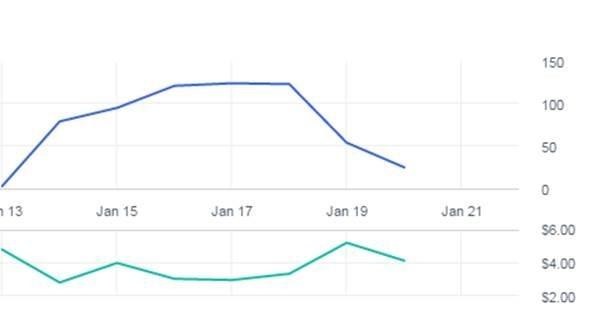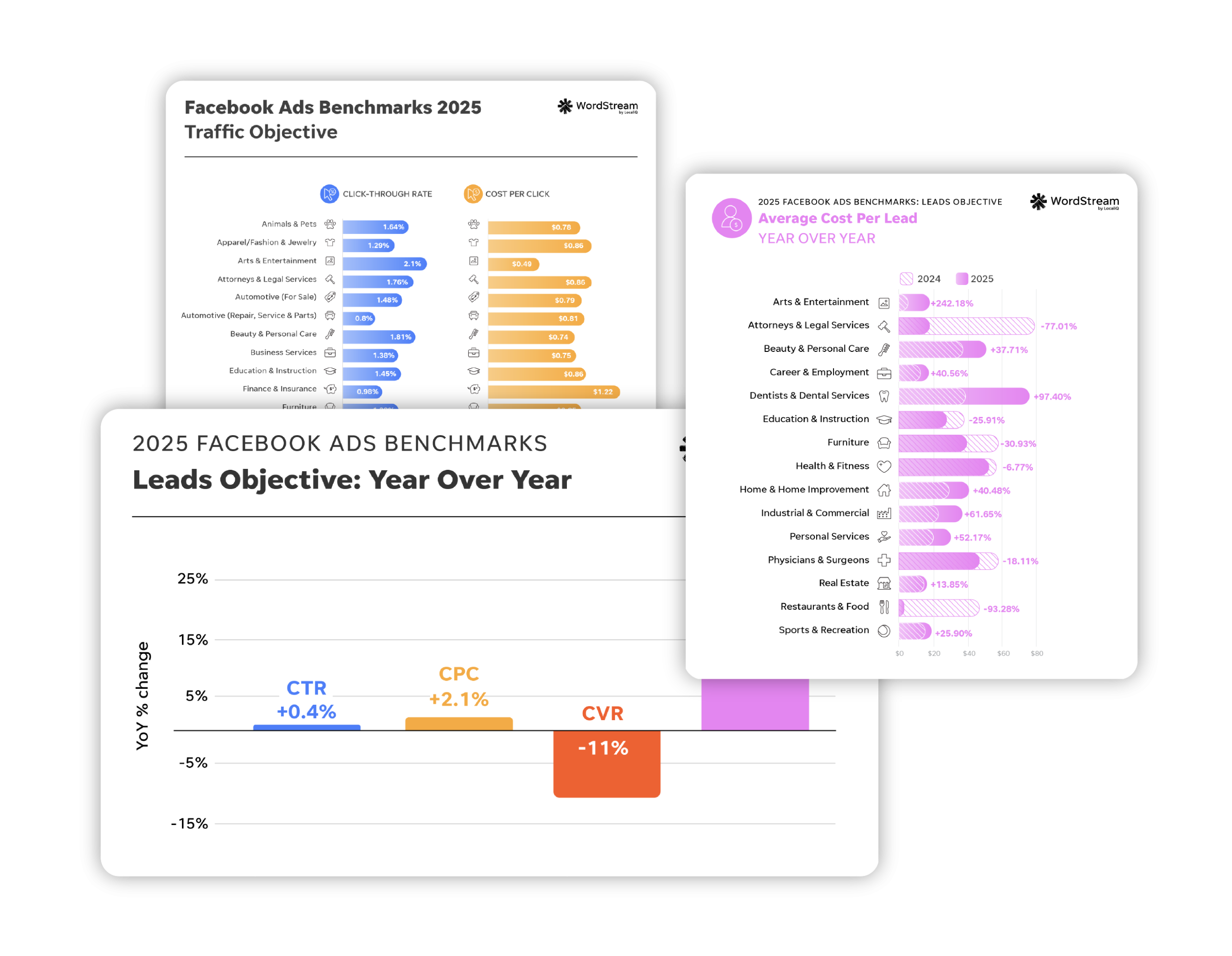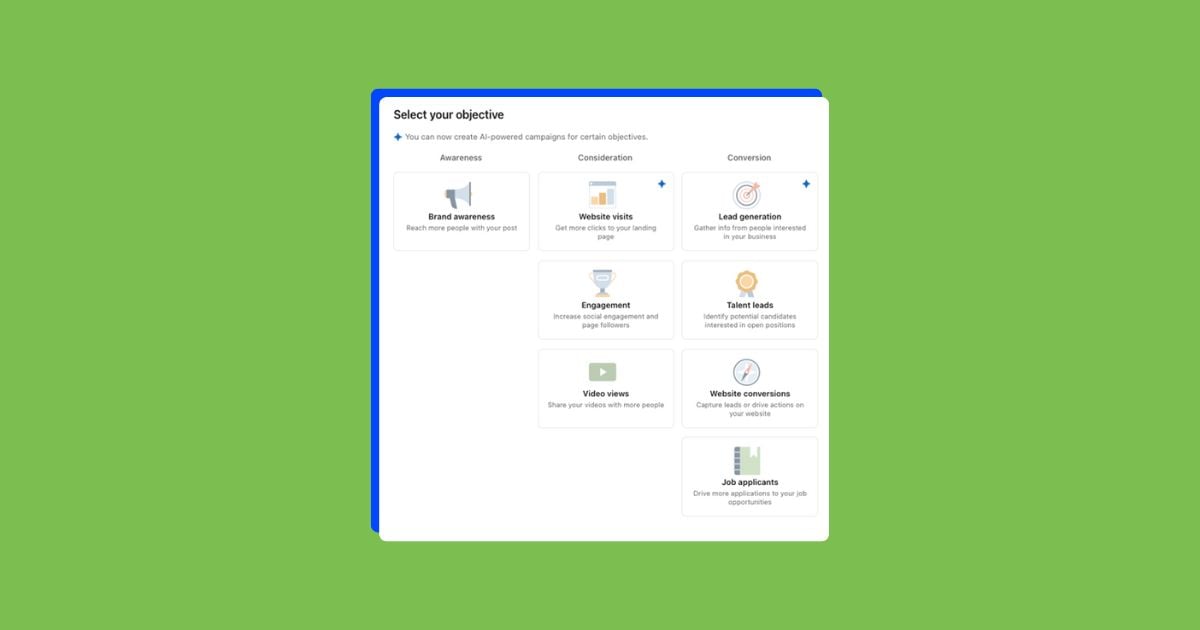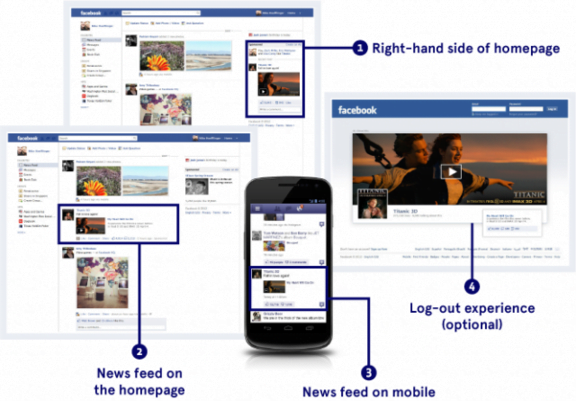
Maybe you’re curious about the ads you’ve seen in your Facebook News Feed or are considering diversifying your digital marketing strategy to incorporate paid social. Or maybe (like most of our clients) you’re already dabbling in Facebook advertising. Either way, you’ve probably asked yourself the same question: Does Facebook advertising work?
It’s a perfectly reasonable question, regardless of how familiar you are with paid social. Fortunately, there’s a short, easy answer: yes, Facebook advertising works – incredibly well.
However, rather than leave it at that, I wanted to examine the reasons why Facebook advertising should be included in every business’ digital strategy. In this guides, we’ll:
- Look at how Facebook advertising actually works
- Take a brief sojourn back through the history of Facebook advertising
- Examine the data behind why Facebook ads are so powerfully effective and why you should be using them
There’s a lot of ground to cover, so let’s dive right in. (Or check out our new Facebook ad tool, the Facebook Advertising Opportunity Calculator, to see for yourself what you could get out of Facebook ads.)
No time to read this post now? Get it as a free download to read later!
How Does Facebook Advertising Work?
“Does Facebook advertising work?” is a valid question, but before we learn whether it works (spoiler: it does), we need to understand how Facebook advertising works.
Image via Facebook
Essentially, the difference between paid search and paid social can be reduced and simplified to a single truism: paid search helps prospective customers find your business, while paid social helps your business find prospective customers. Facebook advertising does this by allowing you to target specific audiences that are likely to be interested in your products and services by leveraging the immense wealth of data Facebook has about its users.
First, you identify your campaign objective, or what you want your Facebook ads to actually accomplish. This might be driving traffic to your website, encouraging visitors to download your app, generating leads, or increasing sales.
Once you’ve identified your campaign objective, you then tell Facebook to whom your ads should be displayed. This is done by what is known as audience segmentation – the process of providing Facebook with a profile of your ideal audience so Facebook only displays your ads to people who exhibit the behaviors and belong to the demographics you’re interested in. Facebook has thousands of custom audience parameters, allowing you to create amazingly refined audience segments for your campaigns. You can also create custom audiences by uploading data on existing customers that you already have, which enables Facebook to create “lookalike” audiences based on parameters that you choose.
Next, you create the ads you want to run. Facebook ads are highly visual and align with the ways in which people use Facebook, particularly on mobile devices – definitely no tiny, text-based ads here. Finally, you use data and analytics to evaluate the performance of your Facebook ads, allowing you to make changes to improve everything from impression share to click-through rate, just as you would in a paid search campaign.
The Facebook Ad Auction
Just like Google Ads (formerly known as Google AdWords) and Bing Ads, Facebook utilizes an auction system to determine which ads are shown to which users. However, there are a couple of elements that are unique to Facebook advertising, the first of which is a concept known as competitive value.
The competitive value of a Facebook ad is the sum of an advertiser’s maximum bid – how much an advertiser is willing to pay every time a user takes the desired action – and the ad’s intrinsic quality bid, or how much engagement an ad brings to Facebook and the user experience. Although the precise methodology behind how Facebook calculates intrinsic quality bid is a closely guarded secret, Facebook does concede that factors such as the volume of clicks, likes, and shares is included in this calculation, as is general feedback on an ad.
Other factors, such as user age and other demographic data, can
also impact bid costs. Image via AdWeek.
However, not every advertiser wants users to take the same action or shares the same campaign objective. This is why Facebook advertising calculates the maximum bid of an advertiser by determining the estimated cost-per-thousand impressions of an ad, or eCPM. This system allows Facebook advertisers to compete on equal footing, regardless of objective or ad format. For more on how Facebook applies this calculation to various ads and objectives, read this section of the Facebook for Business support documentation.
A Brief History of Facebook Advertising
Now that we know how Facebook advertising works, it’s worthwhile looking back at the social network’s history – and its subsequently meteoric rise to global dominance – to understand why Facebook advertising is so effective.
Facebook Flyers
Many marketers mistakenly believe that Facebook first got into the advertising game back in 2012, shortly before it filed its surprisingly poor IPO (strange how quickly this was forgotten in subsequent years). However, although Facebook did indeed introduce a raft of advertising options four years ago, the history of Facebook advertising traces back to the social network’s very earliest days in 2004 with what were known as Facebook Flyers.
These cheap, simple ads were designed to be the digital equivalent of notices you probably saw on noticeboards in your college dorm or plastered around the quad. Aimed at individuals and small businesses hoping to target students at specific campuses during the early days of Facebook’s burgeoning growth throughout academia, Facebook Flyers cost between $10 and $40 per day and were primarily used to advertise social gatherings (read: keggers) and other things you’d expect to see in campus noticeboard ads – dog-walking services, part-time barista jobs, you get the idea.
Although it would be easy to dismiss Flyers as a way for Mark Zuckerberg to make a quick buck and cover the rising costs of the site’s hosting (which was still known as thefacebook.com when Flyers were introduced), Flyers actually bore many of the hallmarks of “true” paid social ads, even way back then. Advertisers could choose from a range of themes, precursors to the wide range of ad formats available today. Advertisers were encouraged to include images to increase CTR, a common practice in today’s online advertising campaigns. Facebook Flyers featured character limits (25 characters for headlines, 200 characters for ad text). Advertisers were encouraged to include links to a landing page, a paid social best practice that remains relevant and highly recommended, and advertisers could also set budgets and determine ad visibility just as they can today. Finally, Flyers could be targeted to Facebook users based on a range of demographics in much the same way (albeit somewhat more simplistically) they can today.
Looking back at Facebook Flyers, it becomes a lot easier to see Zuckerberg’s long-term strategy for monetizing his rapidly growing site. In 2012, there was a great deal of speculation that Facebook would monetize solely to appease investors and shareholders when the company went public, but it’s obvious that this strategy was on the table from the outset.
Facebook’s Declining Organic Reach
Now that we know a little more about Flyers, it’s important to examine how Facebook gradually strangled the organic reach of posts to essentially force companies to “pay to play.”
Although marketers capitalizing on Facebook’s organic reach suspected that things were going from bad to worse for some time, it was the landmark Social@Ogilvy study that was published by Ogilvy & Mather in 2014 that revealed just how shocking the decline of Facebook’s organic reach had become.
Between October 2013 and February 2014, Facebook pages of all types saw dramatic reductions in organic reach – a trend that came to be known by many names, from “Facebook Zero” to “Reachpocalypse”:
Aside from how rapidly Facebook’s organic reach declined, the real surprise (or not) came from Facebook’s official position on the matter. When asked if the decision to gradually throttle the organic reach of organic content on Facebook was a financially motivated business decision, Facebook said no. In an official blog post, Facebook’s VP of Advertising Technology Brian Boland claimed that the decline in organic reach was caused by several factors, including an increase in the volume of content being published on Facebook to the refinement of the News Feed algorithm.
While these factors may indeed have contributed to “Facebook Zero,” some of the digital marketing industry’s most prominent thought leaders weren’t convinced. Jay Baer of Convince & Convert plotted the data from the Ogilvy study against changes in Facebook’s stock value, and the results certainly suggest that the decline in organic reach had a hugely positive financial impact for Facebook, whether intentional or otherwise:
Image via Convince & Convert
As you can see, the steady decline in organic reach on Facebook correlates almost perfectly with the steady increase in Facebook’s stock price. Of course, correlation does not necessarily equal causation, but this data speaks volumes about how Facebook gained from many marketers’ loss, regardless of whether this was a calculated business decision or a happy coincidence.
What Makes Facebook Ads So Effective?
So, now that we know a little more about Facebook ads’ history, let’s take a look at why Facebook ads work and are such a powerfully alluring option for digital marketers.
Facebook’s Immense Global Audience
Facebook has a global audience of approximately 1.5 BILLION people – around one-fifth of the entire planet’s population, give or take a few hundred million. Understandably, this statistic is one of the most popular among Facebook advertising evangelists, and for good reason. No other social network comes close to Facebook’s market penetration, but what’s almost as exciting as the sheer enormity of Facebook’s audience is the time in which it achieved this unprecedented achievement.
The figure below, taken from Pew Research Center, shows Facebook’s growth trajectory from its inception in 2004 to 2013. Note that this data focuses on monthly active users, or MAUs, not Facebook’s total registered user base, which would likely be significantly larger if inactive accounts were included:
There are two main reasons this growth in users is so important to advertisers. The first is that the larger the audience, the more granularly advertisers can target potential prospects. Unlike traditional advertising platforms, the emphasis in paid social is on finding the right people, not finding as many people as possible, a paradigm that is the polar opposite of platforms such as TV and radio advertising.
As Facebook’s user base continues to grow, the larger the potential audiences advertisers can target based on demographics, personal interests, purchasing behavior, life events, and thousands of other criteria that can improve the ROI of a Facebook advertising campaign.
The second reason Facebook’s growth trajectory is so important is that, whether you use Facebook personally or not, the platform continues to align strongly with changing media consumption habits and the adoption of consumer technology such as mobile devices. According to data from Facebook’s Q3 2015 earnings report, the number of daily active users accessing the site via mobile devices was 893 million during September of last year, a year-over-year increase of 27%.
In addition, 727 million people – almost half of Facebook’s MAUs – never access the site from a desktop, meaning that Facebook has one of (if not the) largest mobile-exclusive monthly user bases of any site in the world.
Data/image via VentureBeat
It’s worth noting that this data does NOT include usage statistics from either WhatsApp or Instagram, meaning Facebook’s total worldwide mobile usage penetration is considerably larger than the data above indicates.
Is Facebook Dying?
With all the talk about growth and increasing mobile adoption, it would be remiss of me to not briefly mention the inevitable (and often unintentionally hilarious) doomsayers and their prophetic predictions of Facebook’s imminent demise.
In January 2014, two researchers at Princeton University’s Department of Mechanical and Aerospace Engineering (yes, you read that correctly) conducted a study to determine the potential longevity of Facebook as a social network, and how fluctuations in adoption and usage of social networks can reflect trends often observed in epidemiology, the study of how diseases spread (again, you read that correctly). The paper concluded that, based on declining volumes of the keyword “Facebook” according to Google Trends data, that Facebook was doomed and would begin to crumble like the Roman Empire as early as next year.
Now, I’ll be the first to concede that my command of algebra leaves a great deal to be desired, so I’ll trust the researchers’ math. What I can’t get behind, however, is their methodology. Basing such a bold claim – the imminent demise of the world’s largest, most popular social network by 2017 in spite of established, continued, demonstrable growth – on Google Trends data alone seems flawed at best, and negligent at worst.
Regardless, the paper’s publication sparked a predictable tsunami of similarly illogical think-pieces about how Facebook is dying, how the company is in trouble, and all other manner of grim tidings. Of course, apocalyptic predictions are to be expected whenever a company is doing well (or not), especially when there’s all those marketers and bloggers out there desperately clamoring for pageviews. However, this doesn’t mean Facebook is dying, nor should it factor into your marketing strategy.
It’s true that, overall, user adoption of Facebook has slowed in some parts of the world, such as the United States and parts of Asia. However, with so many people already using the service, market saturation was bound to have an impact on Facebook’s growth trajectory eventually. This is not the death knell you may have heard about, however. Facebook remains the most popular social network in the world, and slower growth is still growth. Other social networks have grown, but they’re still nowhere close to even approaching Facebook’s market penetration.
Facebook is also still crushing it in terms of user engagement. According to data from Pew Research Center, 70% of U.S. Facebook users access the site daily, of which 43% do so multiple times per day. In addition, 82% of the highly coveted 18-29 year-old demographic are among the most actively engaged Facebook users.
Image via Business Insider
TL;DR – don’t believe the hype. Facebook isn’t dying, and it isn’t going anywhere anytime soon.
Now that we’ve dispelled some of the myths about Facebook’s impending doom, let’s get back to why Facebook ads are so effective, beginning with cost and potential ROI.
Are Facebook Ads Worth It? Some Data on Facebook Costs
Although advertisers have many elements to consider when launching a new online advertising campaign, from potential reach to ad creative, oftentimes it comes down to cold, hard numbers. Fortunately, Facebook is one of the most cost-effective advertising platforms available. However, with so many ad formats available, the question of ROI depends greatly on the ad format in question. Let’s take a look.
The figure below, based on WordStream data, shows that the average cost-per-click of Facebook ads is $1.72 – a remarkably low CPC considering how effective Facebook ads can be:
Facebook ads are similarly cost-effective when it comes to cost-per-action, or CPA. As we can see in the figure below, CPAs across Facebook ads vary quite widely. Some sectors offer more competitive CPAs than others. The education and apparel verticals have significantly lower CPAs than the home improvement and technology verticals:
To see even more data on Facebook advertising costs, check out the full range of WordStream data on Facebook advertising benchmarks for your industry.
Although the cost of Facebook advertising has risen in recent years, overall costs remain significantly lower in many cases than similar metrics in PPC.
Image via Salesforce Q1 2015 Advertising Benchmark report
The figure above highlights the average cost-per-thousand impressions (CPM), cost-per-click (CPC), and click-through rate (CTR) for Facebook ads worldwide.
You’ll notice that in the United States, for example, the average CPM decreased considerably between Q4 2014 and Q1 2015. You’ll also see that in many regions (primarily English-speaking countries), CTR actually increased alongside this decrease in CPM, indicating stronger engagement with Facebook ads in these areas. Overall, the average CPM of Facebook ads decreased by 11% worldwide during the Q4 2014-Q1 2015 period, adjusting for normal seasonality fluctuations.
Why Advertise on Facebook: A WordStream Case Study
Although statistics like those above are very interesting, and make a powerful case for incorporating Facebook into your wider digital strategy, one of the drawbacks of this data is that it’s pretty far removed from the actual ads and campaigns that generate these figures.
With that in mind, I asked Brett McHale, WordStream’s resident paid social expert, to show us an example of how effective Facebook advertising has been for WordStream – and the importance of focusing on campaign objectives, even when it seems counterintuitive.
Ad creative for the Digital Marketer’s Road Map campaign
Brett recently put together a campaign for a bundle of whitepapers, blog posts, and other content resources called The Digital Marketer’s Road Map. In the past, Brett had managed to achieve strong performance according to traditional metrics. However, in this campaign, Brett noticed that focusing on CTR and Relevance Score wasn’t translating into conversions.
“When it comes to Facebook adverting, it’s important to take the metrics that they give you and reapply them to your end goal,” says Brett. “Take Relevance Score and CTR, for example. These two metrics are held in high regard because they are both interrelated, but if your goal is lead generation, they become substantially less important.”
In the past, Brett devoted a great deal of time, effort, and energy into maintaining high Relevance Scores by rotating his ad creative on a regular basis – sometimes daily – to ensure the ads being displayed in his campaigns were fresh. By paying such close attention to his campaigns, Brett was able to achieve Relevance Scores of between 7 and 9, significantly higher than the Facebook average, as well as click-through rates of between 4-5%, also much higher than the average campaign.
The only problem was that this approach wasn’t yielding many conversions, despite the campaigns’ strengths according to traditional metrics – so Brett went back to basics.
“I decided to redirect my focus back to the central value proposition and let the ads run to the desired audiences,” Brett says. “My Relevance Score dropped back to around 4 or 5, my CTR dropped as low as 0.68%, and my Frequency would increase to 2.00 to 3.50.”
Ordinarily, many advertisers would be gravely concerned by this perceived drop in performance. The difference in terms of results for Brett’s campaigns, however, was amazing, as evidenced by the two graphs below.
The first graph shows performance over time for the ad sets with high CTR and high Relevance Scores:
The second graph shows performance over time for the ad sets with lower CTRs and lower Relevance Scores – but the second set resulted in 75% more conversions than the first:
Brett’s key takeaway from this campaign? Focus on what’s important to you, not traditional metrics that may not even apply to your campaign objectives.
“Apply the metrics they give you to your goals, not superficial expectations based on generalized perceptions of success that some ‘guru’ tells you,” says Brett. “If your strategy is to drive clicks and lower costs in relation to the volume of people you are reaching, take the Relevance Score route. If you want leads and conversions that could turn into potential customers, focus on CPA. Stick to the fundamentals.”
The Bottom Line: Yes, Facebook Ads Work!
If you’ve been trying to figure out whether Facebook ads even work or whether Facebook advertising is right for you, this guide should put your concerns to rest. Ready to dig in? Check out our complete guide to Facebook video ads, as well as the Social Ads 101 module in PPC University to learn our top 10 paid social hacks of all time, how to create effective Facebook ads for lead generation, and more. Before you hit go, run through out Facebook ads checklist to make sure your ads are ready. And if your own Facebook ads aren’t working, start with this troubleshooting guide.
Note: If you’re looking for information on the Facebook ads boycott, check out this post: #StopHateforProfit: What You Need to Know About the Facebook Ad Boycott.

